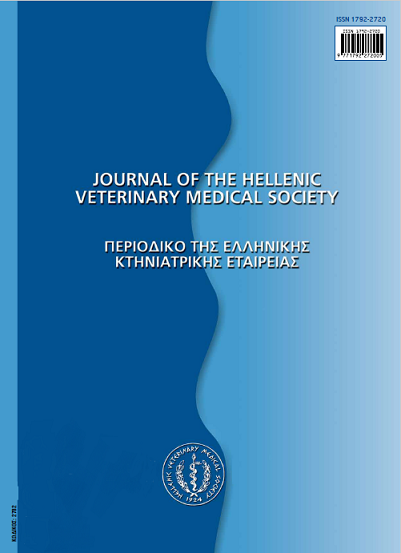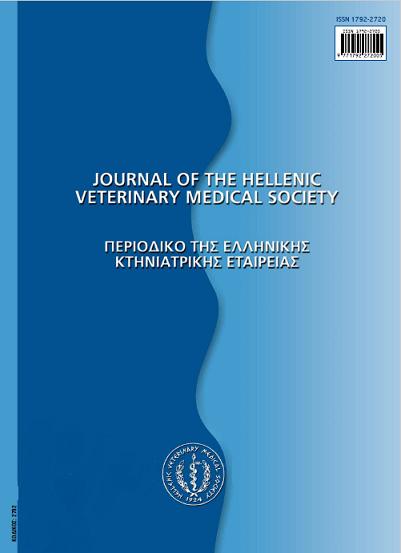Associations of periparturient β-hydroxybutyric acid and non-esterified fatty acids blood serum concentrations with milk yield, milk composition and milk somatic cells count of intensively managed Chios dairy ewes
Resumen
This Research Paper addresses the hypothesis whether in dairy ewes: periparturient β-hydroxybutyric acid (BHBA) and non-esterified fatty acids (NEFA) concentrations are associated with milk yield, composition and udder halves with increased somatic cell counts (SCC ≥ 0.5 × 106 cells/mL). A total of 186 Chios ewes reared under intensive system were used for this research. Serum BHBA and NEFA concentrations were measured before lambing (-30d, -15d), and BHBA concentrations after lambing (+7d, +15d, +30d, +45d). Milk samples were collected at 15, 30 and 45days in milk (DIM). Total milk yield (MY) of the first 30, 60 and 90 DIM and total fortnightly milk yield (FMY) produced from 15 to 59 DIM were recorded. Positive associations between BHBA at +7d and MY of the first 30, 60 and 90 DIM were revealed (P < 0.001). For every increased unit of BHBA at +15d, +30d and +45d, FMY was decreased (DIM: 15 – 29 and 30 – 44) (P = 0.001 and P = 0.015, respectively) or increased (DIM: 45 – 59) (P < 0.001). BHBA before lambing (-30d, -15d) affected the number of halves presented SCC ≥ 0.5 × 106 cells/mL at 15 and 30 DIM (P = 0.011, P = 0.014, P = 0.009, P = 0.096, respectively). Finally, for every increased unit of BHBA during lactation (+15d, +30d, +45d) a decrease in the concentration of milk in proteins, solids not fat and lactose was noted (P < 0.001). This work demonstrates the associations of periparturient blood biochemical parameters (BHBA, NEFA) with milk yield and specific milk production characteristics.
Article Details
- Cómo citar
-
Karagiannis, I., Brozos, C., Kiossis, E., Boscos, C., Fthenakis, G., & Panousis, N. (2019). Associations of periparturient β-hydroxybutyric acid and non-esterified fatty acids blood serum concentrations with milk yield, milk composition and milk somatic cells count of intensively managed Chios dairy ewes. Journal of the Hellenic Veterinary Medical Society, 69(4), 1195–1204. https://doi.org/10.12681/jhvms.15979
- Número
- Vol. 69 Núm. 4 (2018)
- Sección
- Research Articles

Esta obra está bajo una licencia internacional Creative Commons Atribución-NoComercial 4.0.
Authors who publish with this journal agree to the following terms:
· Authors retain copyright and grant the journal right of first publication with the work simultaneously licensed under a Creative Commons Attribution Non-Commercial License that allows others to share the work with an acknowledgement of the work's authorship and initial publication in this journal.
· Authors are able to enter into separate, additional contractual arrangements for the non-exclusive distribution of the journal's published version of the work (e.g. post it to an institutional repository or publish it in a book), with an acknowledgement of its initial publication in this journal.
· Authors are permitted and encouraged to post their work online (preferably in institutional repositories or on their website) prior to and during the submission process, as it can lead to productive exchanges, as well as earlier and greater citation of published work.










